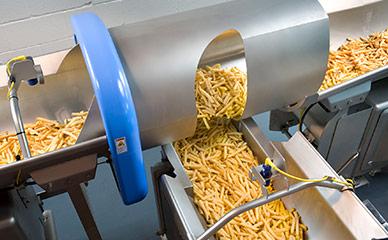French fries, a beloved staple of fast food culture worldwide, owe their crispy goodness to the expertise of French fry manufacturers. Let’s delve into the fascinating world of French fry production, from humble potato beginnings to the innovative processes employed by manufacturers to satisfy the cravings of millions.
Introduction to French Fry Manufacturers
Definition of French fries
French fries, also known as chips or pommes frites, are thin strips of deep-fried potatoes, often seasoned with salt or other flavorings. They are a popular side dish or snack enjoyed in various cuisines around the globe.
Role of manufacturers in the food industry
French fry manufacturers play a pivotal role in meeting the demand for this iconic snack on a large scale. They are responsible for sourcing high-quality potatoes, processing them into uniform fry shapes, and delivering frozen or pre-cooked products to restaurants, fast food chains, and retail outlets.
History and Evolution of French Fries
Origins of French fries
While the exact origins of French fries are disputed, they are believed to have originated in Belgium or France in the 17th century. Potatoes were initially cut into small strips and fried in oil as a substitute for fish during times of fish scarcity.
Evolution of manufacturing techniques
Over the centuries, French fry production has evolved from manual labor to highly mechanized processes. Innovations in cutting, frying, and freezing technologies have led to increased efficiency, consistency, and product quality.
Key Processes in French Fry Manufacturing
Potato selection and preparation
The quality of French fries begins with the selection of the right potato varieties, known for their high starch content and desirable texture when fried. Potatoes are thoroughly washed, peeled, and inspected for defects before being processed further.
Cutting and shaping
Potatoes are sliced into uniform strips or wedges using specialized cutting machines. The size and shape of the fries can vary depending on customer preferences and market demand, ranging from thin shoestring fries to thick steak fries.

Pre-cooking and freezing
After cutting, the potato strips undergo a pre-cooking process to partially cook them and remove excess moisture. This step ensures that the fries maintain their texture and crispiness when fried or baked. Once pre-cooked, the fries are flash-frozen to lock in freshness and flavor.
Technological Advancements in French Fry Production
Automated cutting and sorting systems
Modern French fry manufacturers utilize advanced cutting and sorting systems equipped with sensors and cameras to ensure precision and consistency in fry dimensions. This automation streamlines production and reduces waste.
Innovative frying and freezing methods
Innovations in frying and freezing technologies have revolutionized French fry production, allowing manufacturers to achieve optimal texture and flavor while minimizing oil absorption and preserving nutritional value.
Packaging and distribution solutions
Manufacturers invest in state-of-the-art packaging equipment to package French fries efficiently and maintain product quality during storage and transportation. Vacuum-sealed bags, modified atmosphere packaging, and resealable containers are common packaging options.
Quality Control and Food Safety Standards
Ensuring consistency and uniformity
French fry manufacturers adhere to strict quality control measures to ensure that every batch meets established standards for taste, texture, and appearance. Regular testing and inspection procedures are implemented throughout the production process.
Compliance with regulatory requirements
Manufacturers must comply with food safety regulations and industry standards governing hygiene, sanitation, and product labeling. This includes maintaining clean facilities, implementing Hazard Analysis and Critical Control Points (HACCP) protocols, and conducting regular audits.
Traceability and recall procedures
In the event of a food safety issue or quality concern, manufacturers have traceability systems in place to identify and recall affected products promptly. This ensures consumer safety and protects the reputation of the brand.
Market Trends and Consumer Preferences
Demand for healthier alternatives
Consumers are increasingly seeking healthier alternatives to traditional French fries, driving demand for baked, air-fried, or low-fat options. Manufacturers respond by offering innovative products made from alternative ingredients such as sweet potatoes, zucchini, or cauliflower.
Growth of organic and specialty varieties
The organic food movement has influenced consumer preferences for natural, minimally processed foods, including French fries. Manufacturers are expanding their product lines to include organic and specialty varieties, catering to niche markets and health-conscious consumers.
Impact of sustainability and environmental concerns
As environmental awareness grows, consumers are looking for sustainably sourced and eco-friendly products. French fry manufacturers are implementing sustainable practices such as water conservation, energy efficiency, and waste reduction to minimize their environmental footprint.
Challenges Faced by French Fry Manufacturers
Seasonal fluctuations in potato supply
The availability and price of potatoes can fluctuate seasonally due to factors such as weather conditions, crop yields, and market demand. Manufacturers must anticipate these fluctuations and establish relationships with reliable suppliers to ensure a steady potato supply year-round.
Price volatility of raw materials
The cost of raw materials, including potatoes, oil, and seasonings, can fluctuate due to market conditions and geopolitical factors. Manufacturers must manage these cost pressures while maintaining product quality and profitability.

Competition from alternative snack options
French fry manufacturers face competition from a wide range of alternative snack options, including potato chips, tortilla chips, and vegetable crisps. They must differentiate their products through quality, flavor innovation, and branding to retain market share.
Strategies for Success
Vertical integration and supply chain management
Some French fry manufacturers engage in vertical integration by owning or controlling potato farms, processing plants, and distribution channels. This allows them to have greater control over quality, costs, and supply chain logistics.
Product innovation and diversification
To stay competitive, manufacturers invest in research and development to innovate new flavors, shapes, and cooking methods. Diversifying their product offerings helps them appeal to a broader range of consumers and adapt to changing market trends.
Marketing and branding initiatives
Effective marketing and branding play a crucial role in building brand loyalty and driving consumer demand. Manufacturers invest in advertising campaigns, social media marketing, and promotional activities to raise awareness and enhance brand perception.
Case Studies: Leading French Fry Manufacturers
Profiles of prominent players in the industry
Leading French fry manufacturers include multinational corporations such as McCain Foods, Lamb Weston, and Simplot, as well as regional players and private-label brands. These companies have established themselves as industry leaders through innovation, quality, and market presence.
Success stories and best practices
Case studies highlight the strategies and best practices adopted by successful French fry manufacturers, including investments in technology, strategic partnerships, and customer-centric approaches. By studying these success stories, other players in the industry can gain valuable insights and inspiration for their own growth and development.
Future Outlook
Emerging technologies and trends
The future of French fry manufacturing is shaped by emerging technologies such as automation, robotics, and artificial intelligence. Innovations in sustainable packaging, plant-based ingredients, and alternative cooking methods are also driving industry evolution.
Opportunities for growth and expansion
Despite challenges, French fry manufacturers have ample opportunities for growth and expansion, driven by global population growth, urbanization, and changing consumer lifestyles. Strategic investments in market research, product development, and international expansion can unlock new revenue streams and market segments.
Potential challenges and obstacles
Manufacturers must navigate potential challenges such as rising production costs, labor shortages, and regulatory changes. By staying agile, adaptable, and innovative, they can overcome obstacles and capitalize on opportunities in the dynamic and competitive marketplace.
Conclusion
In conclusion, French fry manufacturers play a vital role in satisfying the world’s appetite for this beloved snack. Through innovation, quality, and commitment to excellence, they continue to meet the evolving needs and preferences of consumers around the globe.
FAQs
- What are French fries made of?
French fries are made from potatoes that are sliced into thin strips, fried in oil, and seasoned with salt or other flavorings.
- How are French fries made on an industrial scale?
French fry manufacturers use specialized equipment to wash, peel, cut, pre-cook, and freeze potatoes before packaging them for distribution to restaurants and retailers.
- Are French fries unhealthy?
While French fries are high in calories and fat when consumed in excess, they can be part of a balanced diet when enjoyed in moderation and prepared using healthy cooking methods.
- What are some popular alternatives to traditional French fries?
Popular alternatives to traditional French fries include sweet potato fries, curly fries, waffle fries, and potato wedges.
- How can consumers ensure the quality and safety of French fries?
Consumers can ensure the quality and safety of French fries by purchasing products from reputable brands, checking expiration dates, and following cooking instructions carefully to prevent foodborne illness.



